
-
Cambodia

-
Population
14.1 Million
-
Pop. Under 5
1.5 Million
-
% Stunting
40% Of Children Under 5
-
% Underweight
28% Of Children Under 5
At a Glance
- Background
- Nutrition Situation
- USAID Programs: Accelerating Progress in Nutrition
- Other USAID Nutrition-Related Development Assistance
Download the nutrition profile [PDF, 224KB]
Photo credit: Cambodia HARVEST
Background
Cambodia has emerged from decades of civil conflict and economic stagnation to post remarkable progress in economic growth coupled with human development. Real growth for 2014 is estimated to reach 7.2%, driven by the garment, construction, and services sectors.1 Rising global rice prices have driven substantial growth in Cambodia’s agricultural sector. Economic success enabled Cambodia to drastically reduce national poverty rates, achieving Millennium Development Goal (MDG)1 by 2009, and climbing in rank from 139 out of 187 countries in the UNDP’s Human Development Index of 2011 to 136 in 2014.
Despite this, Cambodia remains a low-income, food-deficit country with 19.8 percent of the population under the national poverty line.2 About 80 percent of the population live in rural areas, and 70 percent relies on agriculture, fisheries and forestry for their livelihoods; agriculture accounts for 35 percent of GDP.3 Rural livelihoods are threatened by illegal logging, overfishing and climate change. Agricultural growth is constrained by inadequate infrastructure.
Cambodia has made remarkable strides in the health-related MDGs and has already achieved its 2015 MDG targets for infant mortality, under-five mortality, maternal mortality and HIV/AIDS.4 Reductions in infant and child mortality have been attributed to increased rates of immunization and exclusive breastfeeding, sustained vitamin A coverage, improved access to basic health services, overall reduction of poverty, and increased coverage of integrated management of childhood illness.5
Nutrition Situation
Though Cambodia produces a surplus of rice for export, the population still exhibits significant stunting and global acute malnutrition rates, to various degrees and within all income levels. This reflects a situation where household access to sufficient and nutritious food is not enough to overcome high rural poverty, limited social protection for poor and vulnerable families, and exposure to natural disasters such as flooding and droughts.
The nature of malnutrition in Cambodia points to the need for nutrition education and behavior change, with a focus on infant and young child feeding practices and improved sanitation and hygiene. One quarter of the population is considered food-deprived.4 Undernutrition rates are high and have changed little in the past 10 years, with 40 percent of children under five stunted and 11 percent wasted, and almost 20 percent of women thin for their height.6 Micronutrient deficiencies, especially iron, vitamin A and iodine deficiencies, are of critical concern. More than half of children under 5 and 44 percent of women of reproductive age are anemic. However, high anemia rates are partly due to a high prevalence of thalassemia, found to be 30 percent in a survey conducted in one province.
The disparity in stunting prevalence between rural (42 percent) and urban (28 percent) children is substantial, and can be largely attributed to disparities in access to water and sanitation between urban and rural areas. Provincial variations are evident, with the highest stunting rates in Preah Vihear/Steung Treng (56 percent) and the lowest rates in Phnom Penh (25 percent). Stunting is inversely related to maternal education levels and wealth, and is higher among children living in the poorest households (51 percent) than among children in the richest households (23 percent), where food access is not a problem, but other issues prevail.6
| Cambodia Nutrition Data | ||
|---|---|---|
| Population | 14.3 Million | |
| Population under 5 years of age (0-59 months) | 1.5 Million | |
| 20057 | 20106 | |
| Prevalence of stunting among children under 5 (0-59 months) | 43% | 40% |
| Prevalence of underweight among children under 5 (0-59 months) | 28% | 28% |
| Prevalence of wasting among children under 5 (0-59 months) | 8% | 11% |
| Prevalence of anemia among children aged 6-59 months | 62% | 55% |
| Prevalence of anemia among women of reproductive age (15-49 years) | 47% | 44% |
| Prevalence of thinness among women of reproductive age (15-49 years) | 20% | 19% |
| Prevalence of children aged 0-5 months exclusively breastfed | 46% | 74% |
| Prevalence of breastfed children aged 6-23 months receiving a minimum acceptable diet | 45% | 45% |
National Nutrition Policies
The Cambodian government has laid out numerous nutrition strategies, plans and policies since 1996, with specific MDG-related targets to reduce stunting, underweight and wasting among young children by 2015.
The government is actively addressing undernutrition, micronutrient deficiencies and food insecurity. A national Council for Agricultural and Rural Development (CARD) was established in 1998 to lead the Food Security and Nutrition Technical Working Group and coordinate nutrition-related efforts among all the line ministries and development partners. The Ministry of Health (MOH) and the National Nutrition Program (NNP) have implemented the National Nutrition Strategy 2009-2015, based on the Cambodia Nutrition Investment Plan from 2007.
Most recently the MOH/NNP has developed the country’s first Fast Track Road Map for Improving Nutrition, 2014-2020. In addition, under the leadership of CARD, with support from USAID, a new and multisectoral Food Security and Nutrition Strategy has been developed. A national communication strategy for micronutrients (including vitamin A and iron/folic acid) is also in place, accompanied by a national campaign to promote complementary feeding, and interim guidelines on the management of severe acute malnutrition—all of which receive significant USAID support.
With USAID support in 2012, an Integrated Nutrition Investment Framework review identified five focus areas for nutrition interventions, including food consumption and hygiene behaviors, nutrition of pregnant and lactating women, maternal and child anemia, dietary diversity, and the nutrition-enabling environment. USAID also contributed to the strategic vision and technical agenda of the fourth National Food Security and Nutrition Seminar in May 2012, which highlighted the importance of addressing poor maternal and child nutrition indicators.
In June 2014, Cambodia joined Scaling Up Nutrition (SUN), a global movement that unites national leaders, civil society, bilateral and multilateral organizations, donors, businesses and researchers in a collective effort to improve nutrition. There is no specific donor convener identified for Cambodia.
USAID Programs: Accelerating Progress in Nutrition
| Highlighted Bilateral Nutrition Projects in Cambodia | |||
|---|---|---|---|
| Project Name | Year Awarded | End Date | Objective(s) |
| Integrated Nutrition Hygiene and Sanitation Program (NOURISH) | 2014 | 2019 |
|
Feed the Future Progress
Feed the Future, the U.S. Government’s global hunger and food security initiative, has a multi-year strategy that focuses on improvements in three areas: agricultural productivity (availability), rural incomes (access) and food utilization. This strategy also integrates key aspects related to adaptation to global climate change that also help address the emerging focus on resilience. The food utilization component emphasizes nutrition education, improved sanitation and hygiene, and access to clean water.
The Feed the Future target regions are the four provinces in the Tonle Sap lake region: Battambang, Siem Riep, Kampong Thom, and Pursat. These areas exhibit high rates of undernutrition, food insecurity and poverty, but conversely, good soil fertility and water availability, and significant potential for diversifying production and incomes through horticulture, aquaculture and rice production value chains—and Cambodia has included these three value chains under its Feed the Future strategy.
The horticulture sector is underdeveloped and does not meet domestic demand. Combining these two industries with the highly productive capture-fisheries of the Tonle Sap ecosystem as well as emerging aquaculture (fish farming), the Feed the Future target area’s project is expected to fuel a significant part of the broader economy.
USAID/Cambodia: Feed the Future Goals
- Reduce the prevalence of poverty in Feed the Future target regions by 25 percent.
- Reduce the prevalence of children suffering from stunting in Feed the Future target regions.
The lead Feed the Future project is Helping Address Rural Vulnerabilities and Ecosystem Stability (HARVEST), which began full implementation in August 2011. In addition to the agricultural interventions (rice, fish, commercial horticulture), the project develops tools to help poor and marginalized households choose and grow nutrient-dense vegetables, herbs and fruit in home gardens based on nutritional value and income potential.
HARVEST also introduces seven commercially viable fish species, eels and prawns to both household and commercial ponds; improves aquaculture techniques; and manages refuge ponds where wild fish and a host of other aquatic species that are eaten locally breed and survive the dry season.
Nutrition education is incorporated in the home garden and aquatic animal protein-related interventions to increase utilization of nutritious foods among vulnerable households who own little or no land. HARVEST has a social inclusion strategy that involves women in all activities, and two-thirds of home gardens are run by women.8
After two years of implementation, the HARVEST project increased rice farmers’ crop sales by 300 percent, and increased home garden and commercial horticulture incomes by 250 percent for 6,000 households, making a significant contribution to household food security. The program has been particularly successful among women, who constitute 66 percent of all clients.
In FY2012, the program educated 7,500 rural households on good nutritional practices by using mobile food carts to demonstrate nutrition-rich cooking techniques and present information on healthy eating habits. Almost 45,000 people, more than half of them women, have received training in food security. Vegetable gardens have been built in 88 schools to teach nearly 5,000 students good farming and nutrition practices, supply food for school meals and provide extra income to purchase academic supplies.8

Other USAID Nutrition-Related Development Assistance
USAID supported the Cambodian MOH’s National Campaign on Communication for Behavior Impact on Complementary Feeding for Children from 6 to 24 months of age, implemented through UNICEF. This initiative has reached over 9,000 caregivers living in 1,641 villages in 10 provinces. Specialized training in infant feeding, plus counseling and communication skills, improved the capabilities of over 6,000 village health volunteers. USAID also recently began supporting the management of acute malnutrition in hospitals. Cambodia joined the Committing to Child Survival: A Promise Renewed campaign, and pledged to reduce under-five mortality to 20 or fewer deaths per 1,000 live births by 2035 by reducing the leading preventable causes of child mortality, including undernutrition.
References
- World Bank Cambodia Country Overview.
- UNDP Cambodia Country Overview.
- CIA World Factbook 2013: Cambodia.
- USAID Cambodia Country Profile.
- Achieving Cambodia’s Millennium Development Goals, Update 2010. Ministry of Planning, Royal Government of Cambodia.
- Cambodia Demographic and Health Survey 2010. National Institute of Statistics (MOP) & Directorate General for Health (MOH), Phnom Penh, Cambodia; MEASURE DHS, ICF Macro, Calverton, MD, USA.
- Cambodia Demographic and Health Survey 2005. National Institute of Statistics (MOP) & Directorate General for Health (MOH), Phnom Penh, Cambodia; MEASURE DHS, ICF Macro, Calverton, MD, USA.
- Cambodia Landscape Analysis Mission Report, Feed the Future, April 2013. USAID & SPRING.

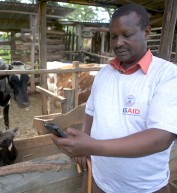
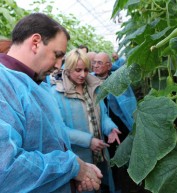
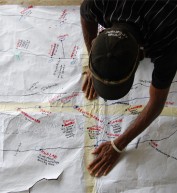
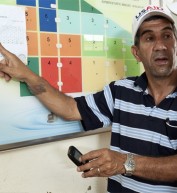

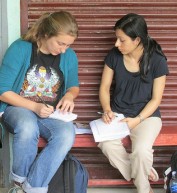
Comment
Make a general inquiry or suggest an improvement.